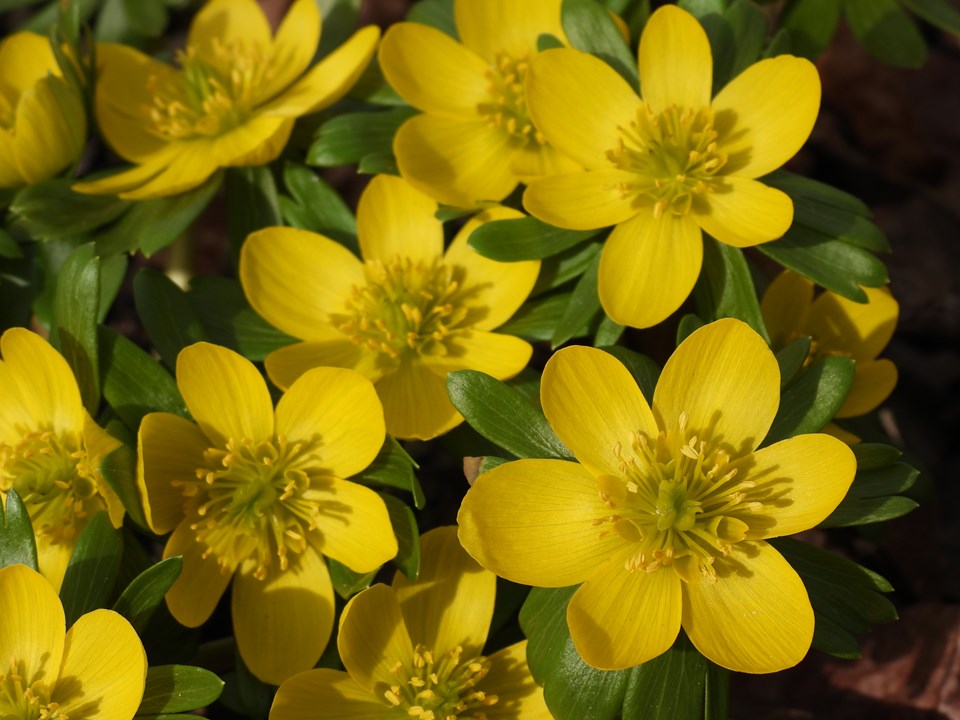Winter Aconite (Eranthis Hyemalis)
Winter Aconite
Eranthus hyemalis, commonly called winter aconite, is native to Europe (France to Bulgaria). It is a late winter bloomer (before crocus) that features cup-shaped, upward-facing, bright yellow, butter-cup like flowers on stalks to 3-4” tall. Each flower is subtended by a collar of leaf-like bracts. A true harbinger of spring, these rugged plants often send their shoots up through snow. Lobed, basal, green leaves emerge after the flowers.
Genus name comes from the Greek words er meaning spring and anthos meaning a flower for its very early flowering.
Specific epithet means of winter or winter blooming.

Easily grown in organically rich, medium moisture, well-drained soils in full sun to part shade. Best in locations that enjoy full sun at the time of bloom, but acquire increasing shade as overhead trees leaf out. Needs consistent moisture year-round (albeit less in summer and fall) even though plants go dormant by late spring. Plant tubers 2-3″ deep and 3″ apart in late summer to early fall. Soak tubers overnight before planting. May self-seed and naturalize over time in optimum growing conditions. Best left undisturbed once planted.
| Hardiness zone | 3 - 7 |
| Sun light | Full Sun To Part Shade |
| Water | Medium |
| Maintenance | Low |
No serious insect or disease problems.
Border fronts, rock gardens, along paths or walkways, or containers. Mass under trees or in front of shrubs. Naturalize in open woodland or wildflower areas. Good near kitchen window or garage where flowers can be appreciated in late winter.
| Common name | Winter Aconite |
| Botanical name | Eranthis Hyemalis |
| Plant type | Bulb |
| Family | Ranunculaceae |
| Hardiness zone | 3 - 7 |
| Water | Medium |
| Maintenance | Low |
| Flower color | Bright Yellow |
| Flowering period | March - April |
| Height | 0.25 To 0.50 Feet |
| Width | 0.25 To 0.50 Feet |